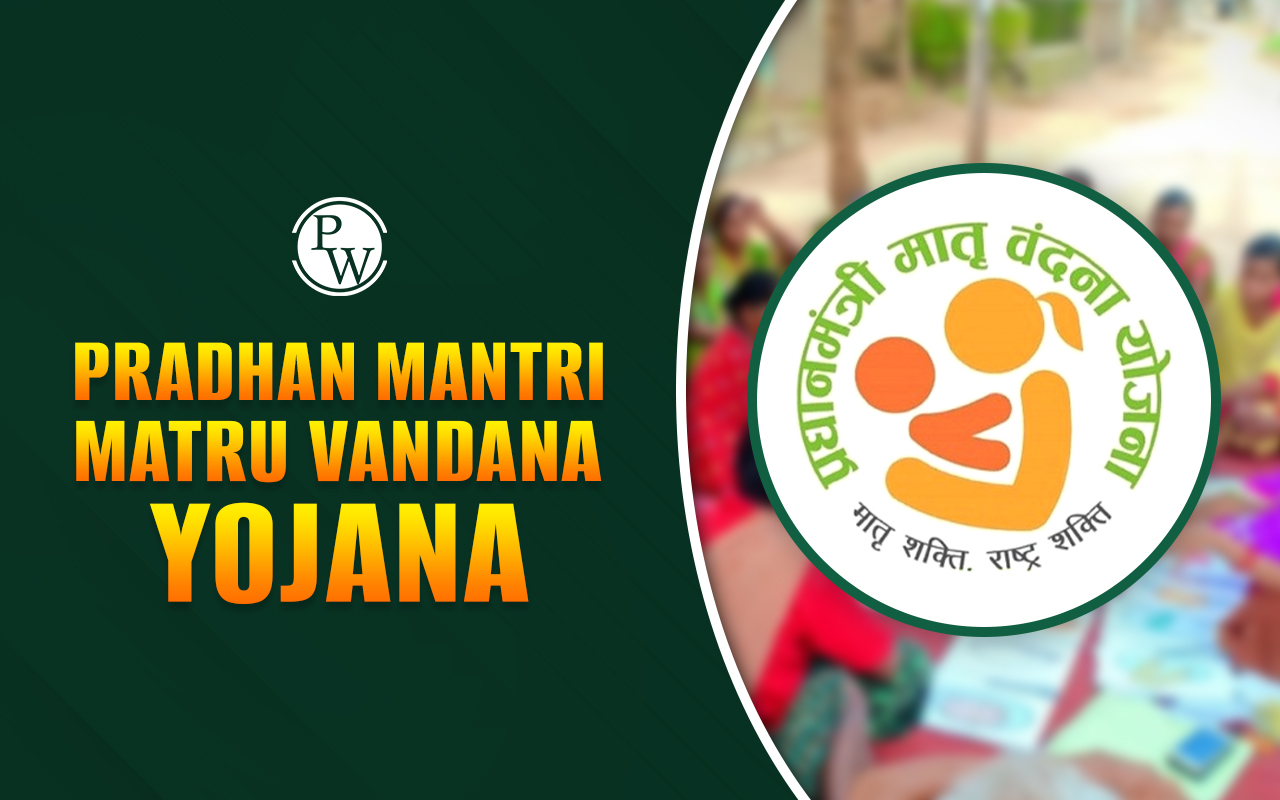
World AIDS Day is observed every year on 1st December , serving as a global platform to raise awareness about HIV/AIDS, observe those who have passed away from the disease, and demonstrate support for those living with HIV. Established by the World Health Organization (WHO) in 1988, this day serves as a crucial reminder of the global health crisis caused by HIV/AIDS and the ongoing efforts to eliminate it, this event has been essential in educating people about the virus, supporting rights, and promoting prevention, treatment, and care.
| World AIDS Day 2024 Overview | |
| Aspect | Details |
| Date | 1st December 2024 |
| Theme | Take the Rights Path: My Health, My Right!” |
| Observed Since | 1988 |
| Organized By | WHO (World Health Organization) |
| Purpose | Raise awareness about HIV/AIDS, support those living with HIV, and commemorate those who have died. |
| Key Focus Areas | Awareness, prevention, treatment, and human rights advocacy. |
| Global Statistics (2023) | 39.9 million living with HIV; 630,000 HIV-related deaths. |
| Highest HIV Cases in India | Mizoram, Nagaland, and Manipur. |
When is World AIDS Day?
World AIDS Day is commemorated every year on 1st December . The establishment of world AIDS Day held in 1988, it is one of the oldest global health awareness days. This observance highlights the need for continued awareness, education, and action to combat the HIV/AIDS epidemic.Why is World AIDS Day Celebrated?
The primary purpose of World AIDS Day is to:- Raise Awareness : Educate people about HIV/AIDS, its prevention, and treatment options.
- Support People Living with HIV : Show mutual support to those affected by the disease and combat the shame or disgrace they face.
- Commemorate Lives Lost : Honor those who have died due to AIDS-related illnesses.
- Promote Human Rights : Support policies and actions that protect the rights of individuals affected by HIV/AIDS.
World AIDS Day 2024 Theme
The World AIDS Day 2024 theme is “Take the Rights Path: My Health, My Right!”. It highlights the importance of human rights in ending AIDS, promoting inclusion, and eradicating stigma. By supporting equality and access to healthcare, the theme highlights the need for laws that protect people’s rights and promote awareness campaigns.History of World AIDS Day 2024
World AIDS Day was first established in 1988 by two public information officers, James W. Bunn and Thomas Netter , from the World Health Organization (WHO). Their initiative aimed to create global awareness about HIV/AIDS and the need for coordinated efforts to combat the pandemic. Since then, December 1st has been observed every year to unite the global community in the fight against HIV, while honouring those who have lost their lives to AIDS, and supporting people living with the disease.Significance of World AIDS Day 2024
World AIDS Day also celebrates a significant global milestone in offering antiretroviral therapy (ART) access, raising awareness about prevention strategies, and encouraging inclusive policies to combat discrimination. The efforts of UNAIDS , along with governments and NGOs, have contributed significantly to reducing the impact of the epidemic, with significant progress made in reducing new infections and AIDS-related deaths acroos the globe. Today World AIDS Day 2024 continues to operate as a powerful reminder of the ongoing challenges in addressing HIV/AIDS and the importance of solidarity and action to achieve the goal of ending the epidemic by 2030.What is AIDS?
AIDS stands for Acquired Immunodeficiency Syndrome , a condition caused by the Human Immunodeficiency Virus (HIV) . HIV weakens the immune system, making it harder for the body to fight infections and diseases. If untreated, it worsens and leads to AIDS, a stage characterised by severe immune damage and life-threatening illnesses.What is HIV?
HIV, or the Human Immunodeficiency Virus, attacks the immune system, specifically targeting CD4 cells (T cells) that help the body fight infections. Without treatment, HIV can progress to AIDS over several years.Difference Between HIV and AIDS
| Aspect | HIV (Human Immunodeficiency Virus) | AIDS (Acquired Immunodeficiency Syndrome) |
| Definition | A virus that attacks the immune system, particularly CD4 cells (T cells). | A severe stage of HIV infection characterized by a weakened immune system. |
| Cause | Caused by exposure to the HIV virus. | Caused by untreated or advanced HIV infection. |
| Progression | It can remain in the body for years without significant symptoms if untreated. | Develops when HIV significantly damages the immune system. |
| Symptoms | Flu-like symptoms in the early stages; can be asymptomatic for years. | Opportunistic infections, weight loss, and severe immune system damage. |
| Diagnosis | Detected through blood or saliva tests for HIV antibodies or viral load. | Diagnosed when the CD4 count falls below 200 or with the presence of specific infections. |
| Treatment | Managed with Antiretroviral Therapy (ART) to suppress the virus. | Requires ART and additional treatment for opportunistic infections. |
| Curability | No cure, but manageable with treatment. | No cure; symptoms can be controlled with ART and supportive care. |
| Purpose of Treatment | To prevent the progression of HIV to AIDS. | To manage infections and improve the quality of life. |
| Prevention | Preventable through safe practices like using protection and avoiding needle sharing. | Prevention focuses on managing HIV effectively to avoid progression. |
UNAIDS Global Leader in the Fight Against AIDS
The Joint United Nations Programme on HIV/AIDS (UNAIDS) is a leading global initiative that is committed to ending the AIDS epidemic as a public health threat by 2030. Established in 1996, UNAIDS works to unite governments, communities, and organizations worldwide in a coordinated response to HIV/AIDS. By supporting prevention, treatment, and support, UNAIDS addresses not just the medical aspects of the epidemic but also the social inequalities and stigma that enhance its spread. On World AIDS Day 2024, UNAIDS continues its mission by highlighting the importance of equal access to healthcare, education, and resources. UNAIDS has set ambitious targets under its 90-90-90 framework:- Diagnose 90% of people living with HIV.
- Ensure 90% of diagnosed individuals receive ART.
- Achieve viral suppression in 90% of those on therapy.
Global Impact of HIV/AIDS
HIV/AIDS is a major public health challenge, with millions affected worldwide. The epidemic disproportionately impacts low- and middle-income countries, particularly in sub-Saharan Africa, where access to healthcare remains a significant challenge. Despite advancements in treatment and prevention, stigma and lack of awareness hinder global efforts to combat the disease.| Category | Key Statistics |
| Global Prevalence | 39.9 million [36.1–44.6 million] people living with HIV in 2023. |
| New Infections (2023) | 1.3 million [1–1.7 million] new cases globally. |
| AIDS-Related Deaths (2023) | 630,000 [500,000–820,000] deaths reported worldwide. |
| Antiretroviral Therapy (ART) | 30.7 million [27–31.9 million] accessing ART by the end of 2023. |
| Cumulative Impact | 88.4 million infections since the epidemic began; 42.3 million AIDS-related deaths. |
| People Living with HIV (2023) | Adults: 38.6 million; Children (0–14 years): 1.4 million. Women/Girls: 53% of the total. |
| Treatment Access (2023) | 77% of all people with HIV, including 84% of pregnant women, had ART access. |
| New Infections Decline | 60% reduction since 1995; new cases fell 39% between 2010 and 2023. |
| AIDS Deaths Decline | Decreased by 69% since 2004 and 51% since 2010. |
| High-Risk Groups | HIV prevalence is higher among: 7.7% of gay men, 5% of injecting drug users, and 9.2% of transgender people. |
| Women and Girls Impact | Accounted for 44% of new infections globally and 62% in sub-Saharan Africa. |
| Testing and Viral Suppression | 86% of people knew their status; 89% of them accessed ART, and 93% were virally suppressed. |
| Funding (2023) | $19.8 billion available; a 5% decline from 2022. $29.3 billion is needed by 2025 to meet global targets. |
HIV/AIDS in India
India has the third-highest burden of HIV across the globe, with approximately 2.5 million people living with the virus in 2021. While the national prevalence is relatively low at 0.22% , states like Mizoram, Nagaland, and Manipur report significantly higher rates.- 2.5 million individuals in India are living with HIV, including 61,000 children .
- 42,000 AIDS-related deaths were reported in 2021.
- States like Mizoram, Nagaland, and Manipur have the highest HIV prevalence rates , exceeding the national average of 0.22% .
|
Indian Statistics Upon HIV and AIDS Cases |
|
| Adults and children living with HIV | 2 500 000 [2 200 000 - 3 000 000] |
| Adults aged 15 and over living with HIV | 2 500 000 [2 100 000 - 3 000 000] |
| Women aged 15 and over living with HIV | 1 100 000 [960 000 - 1 300 000] |
| Children aged 0 to 14 living with HIV | 61 000 [49 000 - 76 000] |
| Adult aged 15 to 49 HIV prevalence rate | 0.2 [0.2 - 0.2] |
| For women aged 15 to 49 HIV prevalence rate | 0.2 [0.2 - 0.2] |
| Men aged 15 to 49 HIV prevalence rate | 0.2 [0.2 - 0.3] |
| Adults and children newly infected with HIV | 68 000 [46 000 - 110 000] |
| Adults aged 15 and over newly infected with HIV | 66 000 [44 000 - 100 000] |
| Women aged 15 and over newly infected with HIV | 27 000 [18 000 - 42 000] |
| Children aged 0 to 14 newly infected with HIV | 2300 [1300 - 4200] |
| HIV incidence per 1000 population (all ages) | 0.05 [0.03 - 0.08] |
| Adult and child deaths due to AIDS | 36 000 [24 000 - 54 000] |
| Deaths due to AIDS among adults aged 15 and over | 35 000 [23 000 - 52 000] |
| Deaths due to AIDS among women aged 15 and over | 11 000 [6400 - 19 000] |
| Deaths due to AIDS among children aged 0 to 14 | 1100 [<1000 - 2200] |
India’s Fight Against HIV/AIDS
The Government of India through the National AIDS Control Organization (NACO) and the National AIDS Control Programme (NACP) , has made impressive and remarkable progress:- HIV and AIDS (Prevention and Control) Act, 2017 : Protects individuals living with HIV from discrimination.
- Access to ART : Over 90% of people with HIV in India have access to ART.
- Project Sunrise : Tackles rising HIV prevalence in northeastern states.
- Memorandum of Understanding (2019) : Collaborates with the Ministry of Social Justice to combat stigma.
- Prevention of Mother-to-Child Transmission (PMTCT): Ensuring HIV-positive pregnant women receive treatment to prevent transmission to their babies.
- Targeted Interventions: Focusing on high-risk groups such as sex workers, drug users, and the LGBTQ+ community.
| Launched in 2016, Project Sunrise focused on combating the spread of HIV/AIDS in the eight Northeastern states of India. The initiative aimed to address the rising prevalence of HIV, particularly among intravenous drug users, by increasing awareness, improving access to treatment, and enhancing infrastructure for prevention and care. It targeted 20 districts in these states to curb the epidemic in a region with high HIV prevalence |
Prevention of HIV
As prevention is the cornerstone of combating HIV/AIDS there are several steps that can significantly reduce the transmission risks:- Safe Practices : Consistent use of protective measures like condoms and cervical caps during intercourse.
- Avoid Needle Sharing : Abstain from using unsterilized syringes.
- Regular Testing : Early diagnosis ensures timely treatment.
- Pre-Exposure and Post-Exposure Prophylaxis : Preventive medication for high-risk groups.
Achievements and Challenges
India’s progress in reducing HIV infections and AIDS-related deaths is commendable. UNAIDS and national programs aim to bridge these gaps, ensuring equitable access to healthcare and education. However, there are many challenges that still persist in rural areas:- Access to Treatment : 5.4 million people living with HIV were unaware of their status in 2023, and gaps remain in accessing antiretroviral therapy, especially among children (only 57% access).
- Funding Shortages : Funding for HIV response has declined by 5% from 2022 to 2023, falling significantly short of the $29.3 billion required for 2025 targets.
- Social Stigma and Discrimination : Marginalized groups, such as transgender individuals, sex workers, and people who inject drugs, face higher infection rates due to stigma and criminalization, which hinder prevention and treatment efforts.
- Gender Inequalities : Women and girls, particularly in sub-Saharan Africa, are disproportionately affected, accounting for 62% of new infections in the region in 2023.
- Emerging Epidemics in High-Risk Groups : Prevalence among high-risk groups, such as gay men (7.7%) and people in prisons (1.3%), continues to be significantly higher, requiring targeted interventions.
Contribution to World AIDS Day 2024
- Educate Yourself and Others: Learn about what is HIV, its prevention, and available treatments.
- Get Tested: Encourage regular testing to know your status and reduce transmission risks.
- Support Affected Individuals: Show compassion and avoid stigmatizing those living with HIV.
- Donate or Volunteer: Contribute to organizations working in HIV/AIDS prevention and care.
Conclusion
World AIDS Day 2024 is a call to action to eliminate disparities and inequalities in HIV care. With advancements in medicine and technology, achieving the goal of an AIDS-free generation is within reach. However, it requires collective efforts, sustained funding, and global solidarity.Ready to take the next step in your UPSC journey? Enroll in our comprehensive course today!
| UPSC Related Articles | ||
| UPSC Prelims Questions | NCERT for UPSC Exam 2025 | UPSC Mains Admit Card |
| UPSC Mains Exam Pattern | UPSC Scholarship Test | UPSC Result |
<span style=
Q1 What is the theme of AIDS Day 2024?
Q2. Why is 1 December AIDS Day?
Q3. What is the aim of World AIDS Day?
Q4. What progress has been made in HIV treatment?
Q5. What does the red ribbon symbolize?
Q.6 How has India addressed HIV/AIDS?







